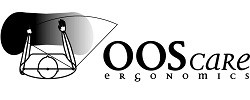Work surfaces - ergonomic requirements
A work surface can be a desk or part of a workstation. The minimum requirements for a work surface are:
- 800mm deep if a flat screen monitor is used. If a CRT screen is still being used, a corner desk will allow sufficient focal length if it is positioned in the corner.
- 1200mm wide for a single task i.e. keyboard work only OR 1500mm wide for mixed tasks.
- Work surface height is preferably adjustable: covering the range from 580mm to 730mm. If fixed, 670mm to 700mm preferred.
- Leg room width should be 800mm to allow the chair to swing both ways and knee length should be 600mm deep over the whole leg room width area.
- The desk top should be about 25mm thick - anything thicker restricts the available space under the desk.
- There should be adequate space for the mouse on either side of the keyboard.
The use of flat screens allows flexibility in the depth of work surfaces. If the work surface is not height adjustable then a footrest will need to be provided for people who cannot comfortably place their feet on the floor or alternatively, for tall workers, desk raisers will need to be used to lift the desk height up.
FOOTRESTS
A footrest is used as a “false floor” to restore proper posture when feet would otherwise dangle. Footrests should adjust in height from 50mm to 185mm and have an adjusting slope range from 0 – 10 degrees. The minimum dimensions are 350mm deep and 450mm wide. The surface should be high friction and flat — carpet is an acceptable surface.
ANGLE BOARDS
Angle boards (including copyholders, writing boards, etc) are placed on desks to allow for adjustment of the angle of the work surface. They allow the neck to be in a more upright posture while reading or writing for prolonged periods.
COMPUTER MONITORS
The top of the computer monitor should be placed at or just below eye level. The natural gaze angle is about 20 degrees below the horizontal. Placing a monitor on the CPU box generally is not recommended. Research has found that most people find a distance of 600mm - 800mm between the eyes and the screen is most comfortable for them. A person should look straight onto the monitor; they should not have to twist their neck to view the monitor. The monitor screen should be 90 degrees to the desk surface to ensure no glare is introduced to the screen - if overhead lighting is very strong it may be beneficial to tilt the monitor downwards but it should be raised to compensate. Sometimes repositioning the monitor on the work surface will help eliminate glare.
